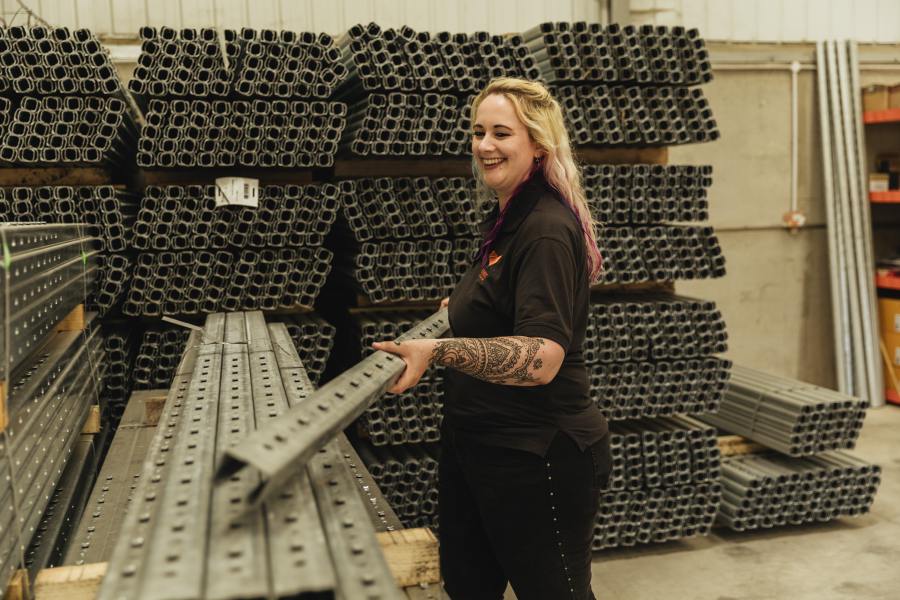Vineyard trellis posts are integral to the strength, longevity and durability of your trellising system. They provide the optimum angles for distributing weight and securing anchors and wires. With many different options available, how do you choose which post is right for your site?
There are two main types of vineyard post
In both processes, the steel is run through a molten zinc bath which chemically bonds to the steel.
Hot-Dipped Galvanised, (aka Post-Galvanised)
- The highest quality, premium level on the market
- Raw, uncoated steel is rolled into shape; tags and holes are laser-cut, and then the whole post is galvanised in zinc-aluminium
- Ensures there are no exposed edges/holes
- Hadley provide a 25-year guarantee – other manufacturers may vary
Pre-Galvanised, (aka Band Galvanised, Inline Galvanised or Continuous Galvanised)
- The standard option
- Flat sheets of steel are galvanised in zinc-aluminium, then rolled into shape; tags and holes are laser-cut
- Edges/holes are not coated which can potentially lead to corrosion
Other considerations
Budget
As with every project, forward-planning is key and being aware of the costs involved at every stage of establishing your vineyard ensures decisions can be based on knowledge and information
Soil type/wind exposure/desired canopy height
- These factors can influence the length of post you require
- Exceedingly rocky sites may require slightly shorter posts or use of a rock-spike to aid installation
- Highly exposed sites may require slightly longer posts to push further into the ground and/or include anchor side plates for added protection against the wind
- Your future vine training system will determine your desired canopy height which can impact your trellis post decisions
Powder-coating options
- Many opt for natural browns and greens to sympathetically blend with the surrounding countryside
- Visibility in public places/conservation areas may dictate the need for powder-coating
- Powder-coating can be applied to both Hot-Dipped Galvanised and Pre-Galvanised posts, but does come at an additional cost
Spares
- Minimum/multiple order quantities will likely come into play for any non-standard length or powder-coated posts
- No matter how perfect your vineyard operatives, there will always be the need for the occasional replacement post
Row breaks/trees/footpaths
- Anything which interrupts a straight row will require additional end posts, anchors and assemblies and alter the calculation for intermediate posts
- Whilst a long row may be referred to as one Row X on your vineyard map, it may need to be considered as two rows for product calculations
Installation
Whether installing by hand with a petrol post driver/sledgehammer or using a tractor-mounted rammer, ensure you use a post protector to absorb the initial impact and avoid damaging the top of each post
Access
- An imporant consideration for every stage of your vineyard establishment
- The length and weight of posts can make deliveries tricky if your site doesn’t have hard-standing, is situated down narrow roads, and/or you lack an offloader on site.
Alternative phrases
- End Posts, (aka Strainer Posts, Anchor Posts or Trellis Posts)
- Intermediate Posts, (aka Mid Posts, Row Posts or Trellis Posts)
A note on wooden posts
- Can be aesthetically pleasing for public-facing areas
- Most commonly used for end posts
- Typically shorter lifespan than metal posts – expect to install replacements
- CExtensive research is recommended into each manufacturer’s offering – consider wood type, treatments, warranties, corrosion-resistance etc
The role of your vineyard posts is to provide structure and support to your entire trellising system. All configurations should be considered before committing to your final decision – you want your trellis to last the lifetime of your vineyard, (or at least 25 years without costly replacements).




